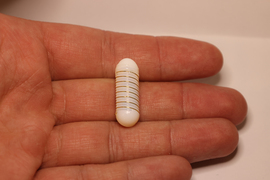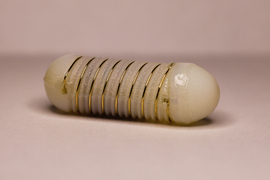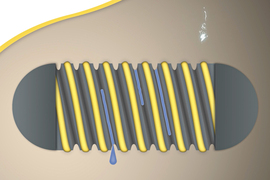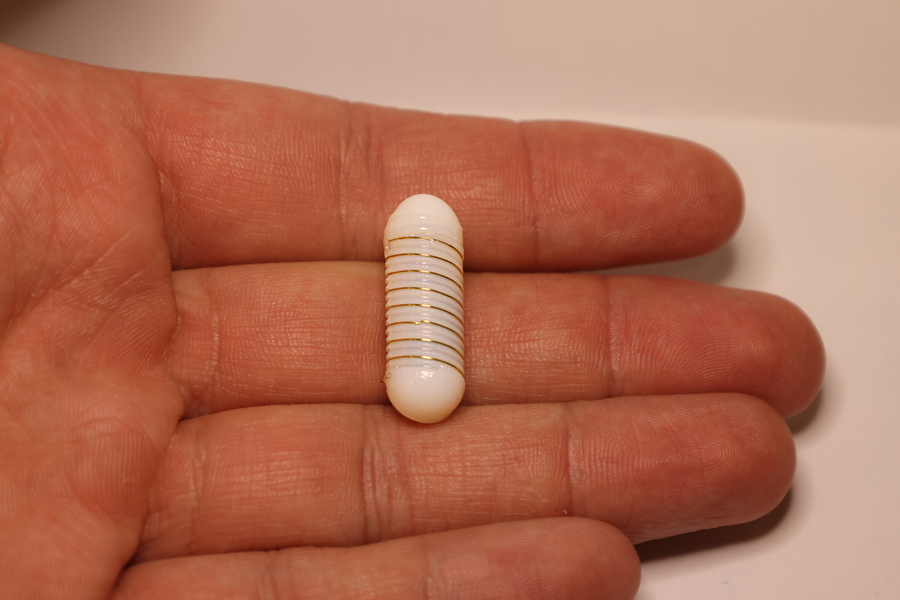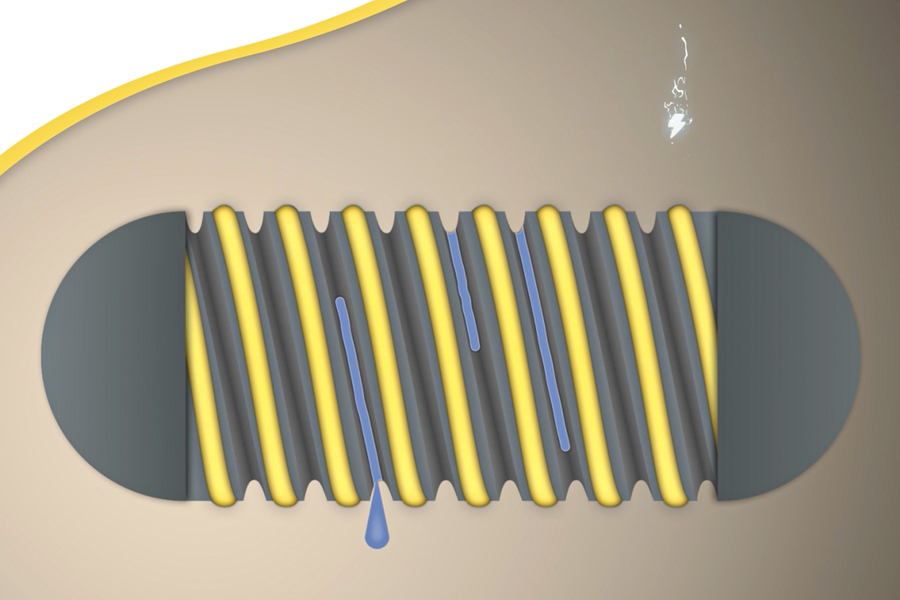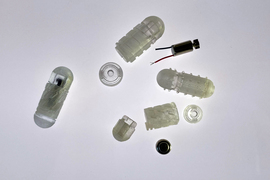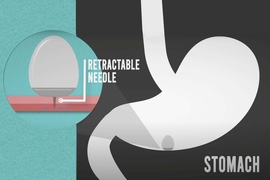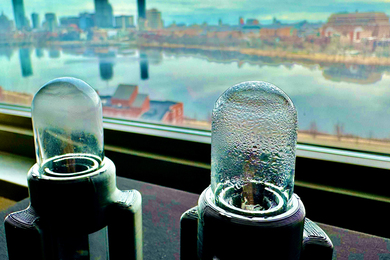Hormones released by the stomach, such as ghrelin, play a key role in stimulating appetite. These hormones are produced by endocrine cells that are part of the enteric nervous system, which controls hunger, nausea, and feelings of fullness.
MIT engineers have now shown that they can stimulate these endocrine cells to produce ghrelin, using an ingestible capsule that delivers an electrical current to the cells. This approach could prove useful for treating diseases that involve nausea or loss of appetite, such as cachexia (loss of body mass that can occur in patients with cancer or other chronic diseases).
In tests in animals, the researchers showed that this “electroceutical” capsule could significantly boost ghrelin production in the stomach. They believe this approach could also be adapted to deliver electrical stimulation to other parts of the GI tract.
“This study helps establish electrical stimulation by ingestible electroceuticals as a mode of triggering hormone release via the GI tract,” says Giovanni Traverso, an associate professor of mechanical engineering at MIT, a gastroenterologist at Brigham and Women’s Hospital, and the senior author of the study. “We show one example of how we're able to engage with the stomach mucosa and release hormones, and we anticipate that this could be used in other sites in the GI tract that we haven’t explored here.”
Khalil Ramadi SM ’16, PhD ’19, a graduate of the Department of Mechanical Engineering and the Harvard-MIT Program in Health Sciences and Technology who is now an assistant professor of bioengineering at the New York University (NYU) Tandon School of Engineering and the director of the Laboratory for Advanced Neuroengineering and Translational Medicine at NYU Abu Dhabi, and James McRae, an MIT graduate student, are the lead authors of the paper, which appears today in Science Robotics.
Electrical stimulation
The enteric nervous system controls all aspects of digestion, including the movement of food through the GI tract. Some patients with gastroparesis, a disorder of the stomach nerves that leads to very slow movement of food, have shown symptomatic improvement after electrical stimulation generated by a pacemaker-like device that can be surgically implanted in the stomach.
Doctors had theorized that the electrical stimulation would provoke the stomach into contracting, which would help push food along. However, it was later found that while the treatment does help patients feel better, it affected motility to a lesser degree. The MIT team hypothesized that the electrical stimulation of the stomach might be leading to the release of ghrelin, which is known to promote hunger and reduce feelings of nausea.
To test that hypothesis, the researchers used an electrical probe to deliver electrical stimulation in the stomachs of animals. They found that after 20 minutes of stimulation, ghrelin levels in the bloodstream were considerably elevated. They also found that electrical stimulation did not lead to any significant inflammation or other adverse effects.
Once they established that electrical stimulation was provoking ghrelin release, the researchers set out to see if they could achieve the same thing using a device that could be swallowed and temporarily reside in the stomach. One of the main challenges in designing such a device is ensuring that the electrodes on the capsule can contact the stomach tissue, which are coated with fluid.
To create a drier surface that electrodes can interact with, the researchers gave their capsule a grooved surface that wicks fluid away from the electrodes. The surface they designed is inspired by the skin of the Australian thorny devil lizard, which uses ridged scales to collect water. When the lizard touches water with any part of its skin, water is transported by capillary action along the channels to the lizard’s mouth.
“We were inspired by that to incorporate surface textures and patterns onto the outside of this capsule,” McRae says. “That surface can manage the fluid that could potentially prevent the electrodes from touching the tissue in the stomach, so it can reliably deliver electrical stimulation.”
The capsule surface consists of grooves with a hydrophilic coating. These grooves function as channels that draw fluid away from the stomach tissue. Inside the device are battery-powered electronics that produce an electric current that flows across electrodes on the surface of the capsule. In the prototype used in this study, the current runs constantly, but future versions could be designed so that the current can be wirelessly turned on and off, according to the researchers.
Hormone boost
The researchers tested their capsule by administering it into the stomachs of large animals, and they found that the capsule produced a substantial spike in ghrelin levels in the bloodstream.
“As far as we know, this is the first example of using electrical stimuli through an ingestible device to increase endogenous levels of hormones in the body, like ghrelin. And so, it has this effect of utilizing the body's own systems rather than introducing external agents,” Ramadi says.
The researchers found that in order for this stimulation to work, the vagus nerve, which controls digestion, must be intact. They theorize that the electrical pulses transmit to the brain via the vagus nerve, which then stimulates endocrine cells in the stomach to produce ghrelin.
Traverso’s lab now plans to explore using this approach in other parts of the GI tract, and the researchers hope to test the device in human patients within the next three years. If developed for use in human patients, this type of treatment could potentially replace or complement some of the existing drugs used to prevent nausea and stimulate appetite in people with cachexia or anorexia, the researchers say.
“It’s a relatively simple device, so we believe it's something that we can get into humans on a relatively quick time scale,” Traverso says.
The research was funded by the Koch Institute Support (core) Grant from the National Cancer Institute, the National Institute for Diabetes and Digestive and Kidney Diseases, the Division of Engineering at New York University Abu Dhabi, a National Science Foundation graduate research fellowship, Novo Nordisk, and the Department of Mechanical Engineering at MIT.
